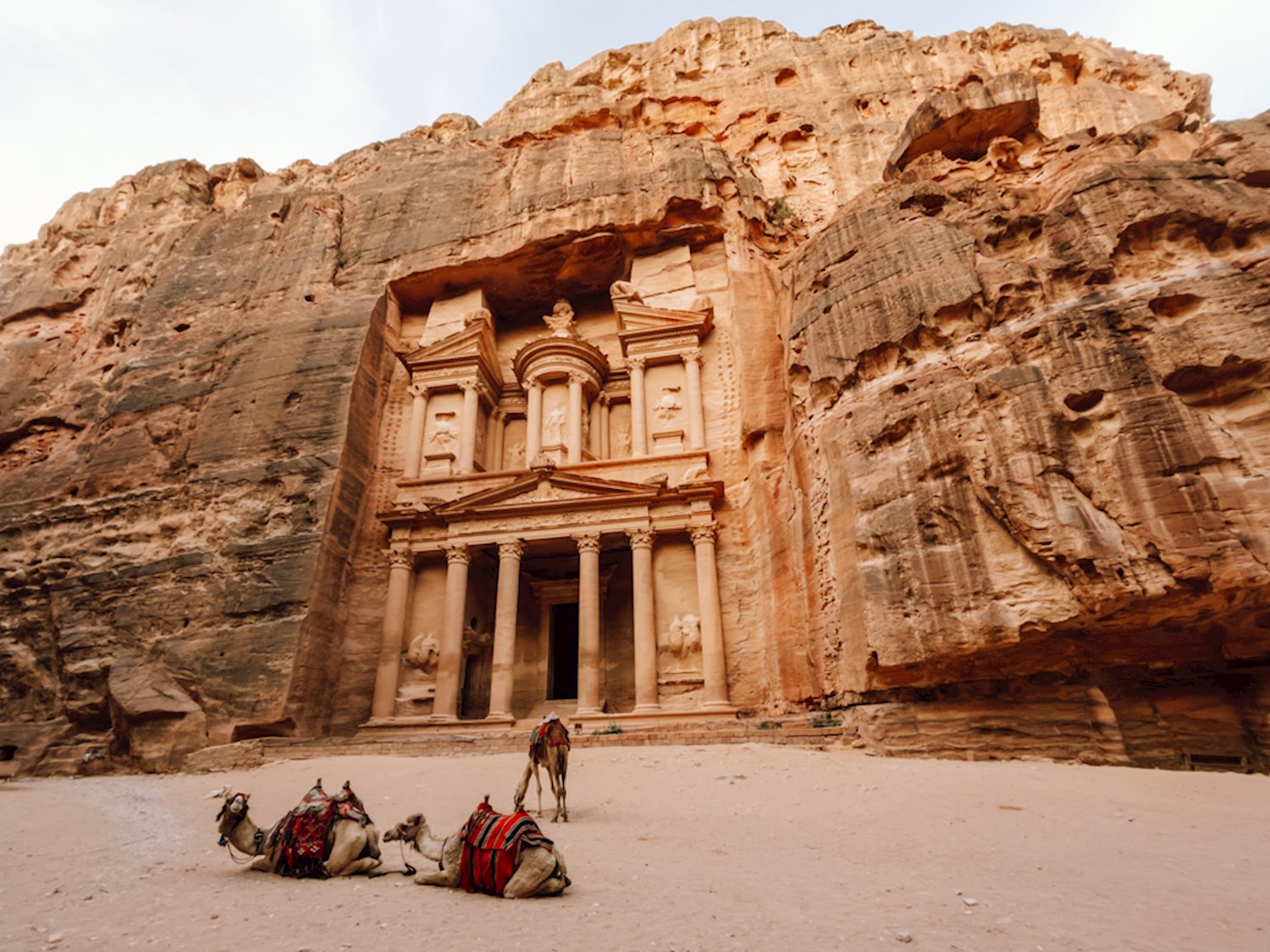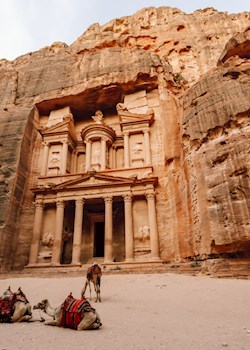Attractions
Explore the enigmatic lost city' of Petra
Petra is a famous archaeological site in Jordan's southwestern desert. Dating to around 300 B.C., it was the capital of the Nabatean Kingdom. Accessed via a narrow canyon called Al Siq, it contains tombs and temples carved into pink sandstone cliffs, earning its nickname, the "Rose City." Perhaps its most famous structure is 45m-high Al Khazneh, a temple with an ornate, Greek-style facade, and known as The Treasury.
more
Explore the enigmatic lost city' of Petra
Once nearly lost to the outside world, Petra is now one of the most loved places on the planet - and it's our must-see pick. From your first glimpse of the Treasury through the exclamation-point-shaped crack in the canyon you will be lured into the Nabataeans' spell. Carefully carved into the looming rose- red cliffs, Petra is one of the world's most treasured Unesco Heritage sites and was voted one of the New Seven Wonders of the World by popular ballot in 2007. The sandstone city - spread over some 264 sq km (102 sq miles) - was constructed by the ancient Nabataeans, a civilisation of crafters and prosperous merchants, and made for a grand trade route stop-off between Arabian oases. But generations later, after the city was abandoned, it was nearly erased from the Western consciousness, known only to the Bedouin who made the caves their home. The difficulty of accessing Petra, secreted away in a series of deep valleys, no doubt helped in its preservation. The iconic Treasury, looming 39m (128ft) high and fluted with two floors of Hellenistic-style columns, is most visitors' first sight of the city, reached after a winding journey through the narrow water-etched slot canyon known as the Siq. The naturally colour-splashed Royal Tombs, a Roman-style amphitheatre and the grand Colonnaded Street lie in wait just around the corner, overseen by the High Place of Sacrifice where the Nabataeans drained the blood of animals to appease their gods. When Swiss explorer Jean Louis Burckhardt laid eyes upon the Treasury in 1812, he was the first foreigner to witness the 'lost city' in hundreds of years. Today Petra could hardly be more found: it clocks nearly a million annual visitors. However, it's easy enough to rediscover Petra's eternal air of mystery by getting off the beaten track: early mornings and the hours before closing tend to be the quietest and most atmospheric, and the surprisingly frigid and wet winter months of December to February scare off the crowds. To visit Petra responsibly, take it slow and steady. Sandstone is extremely fragile and easily dissolves if disturbed. Opt for shoes with a light tread and leave hiking poles at home if you can. Reconsider whether you need a ride: some visitors complain about the treatment of Petra's camels, horses and donkeys, though collaboration between the local Bedouin and the Jordanian government has seen the plight of the working animals improve. If you're planning to tackle the 850 steps to the Monastery, pace yourself: erosion can be lessened by taking it slow. Better yet, spend an extra day at Petra and arrive through the 'back door' entrance that drops hikers near the Monastery after traversing an epic mountainside route. Let Petra leave its mark on you instead of the other way around. SEE IT! The town of Wadi Musa is the transport and accommodation hub for Petra. The site can also be reached by minibus from Amman (four hours), Aqaba (two hours) and Wadi Rum (1½ hours).
Why is Petra famous now?
Petra is half built, half carved into the rock and surrounded by mountains full of passages and valleys. It is one of the most famous archaeological sites in the world, where ancient oriental traditions are combined with Hellenistic architecture.
Why Petra is called Lost City?
It is thought to have been built around 312 BC and was rediscovered in modern times by a Swiss explorer in 1812, who discovered Petra beneath ancient layers of sand, hence the nickname The Lost City.History
What are 5 interesting facts about Petra?
- Petra is a rock-carved ancient city. ...
- The Nabateans founded Petra. ...
- Just 15% of Petra is uncovered. ...
- Petra was never really 'lost' ...
- The Treasury is really a mausoleum. ...
- The main entrance to the city is through The Siq.
What is inside Petra?
Some of the main archeological sites within the city include: the treasury - the tomb of a Nabataean king, the monastery - an isolated mountain temple, a theater, government buildings and housing for the common people.
Is it safe to travel to Petra Jordan?
If you're wondering if it's safe to visit Petra in Jordan, the quick answer is yes. But it is easy to say. We know that when traveling in the Middle East, like anywhere else in the world, things can be confusing and sometimes reading all over the internet can be scary.




